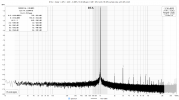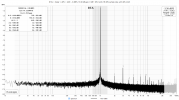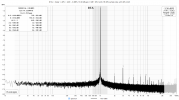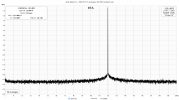It's good to get an understanding of the capabilities of this measurement system, and not just from those who lucked out and got the best "specimens" (or happened to take measurements under perfect conditions etc). It helps me get a better understanding of when to worry when doing actual measurements of other equipment.Let's hope this is useful to somebody reading...
My intention when buying these was to get something that's good enough that I won't have to worry about squeezing out those last decibels of fidelity, and your THD+N figure of well below -100 dB would still be good enough for that, for my use! (Which is sanity-checking/characterising fidelity of hobby audio setups and builds.)




